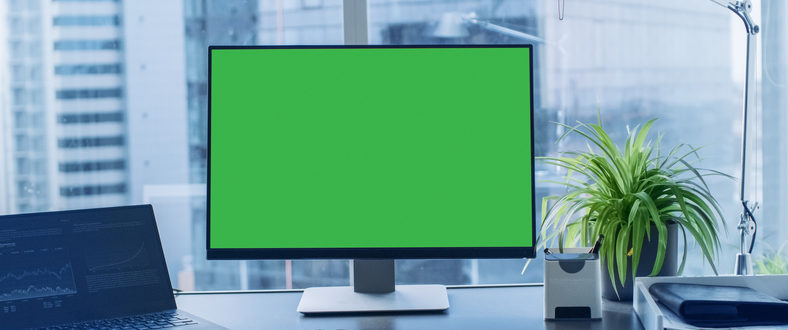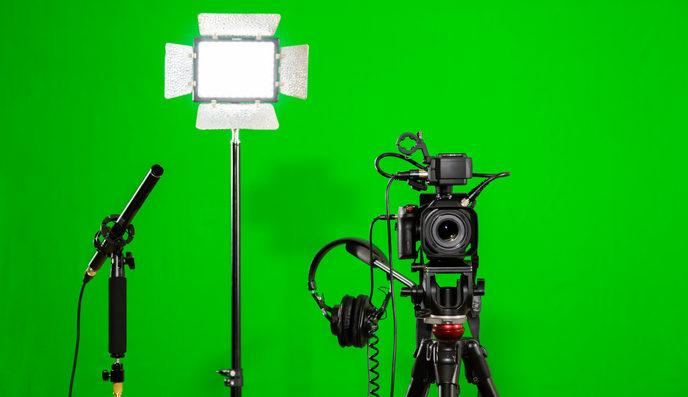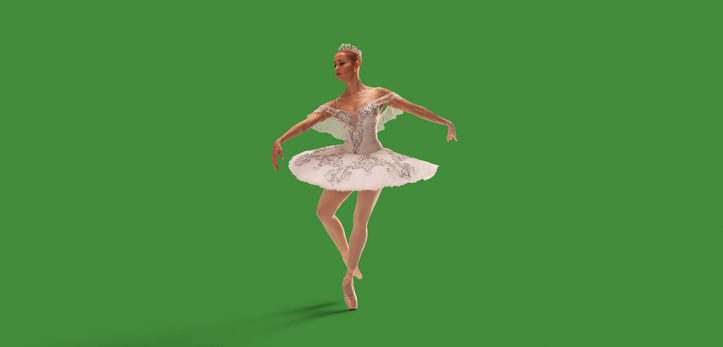Finding The Right Green Screen Stock Footage
If you’re using a green screen (more generally called “chroma-key”), sometimes you need to find stock footage for your broadcast. If you’re not sure where to start or need a refresher, this article will help you to understand the green screen stock footage process.
For context, you can achieve a green screen effect by pointing your video cameras at chroma key background. A chroma key background is essentially a sheet of green (more rarely blue or another color) cloth. Then, by using a live or post-production software, you can remove the green screen background in one or two clicks. From there, you can insert your own green screen stock footage. In fact, you can replace the background with either a video or a photo.
With that context in mind, this article reviews how to find and use green screen stock footage with your streaming solution. Let’s jump right in with a closer look at the stock video footage.
About Green Screen Stock Footage
Stock footage entered widespread use in the 1980s, and it’s ubiquitous today. And the use of green screen stock footage is now extremely common. It’s a great way to get your green screen content onto a professional backdrop quickly and easily.

First, note that stock footage simply refers to video recordings that stock companies sell to anyone who wants to use the footage. Therefore, the same piece of stock footage may appear in multiple broadcasts.
You may think this would lead to viewers recognizing the same video clip. However, in actuality, this isn’t a serious concern. Why? There are millions and millions of stock video clips on the market, and this sort of accident is extremely unlikely.
In addition, stock footage provides a range of benefits. For broadcasters, you can gain access to professional video quality footage at affordable prices. For photographers, you can gain an extra revenue stream from your unused footage.
How To Get Stock Video Footage
There are several ways to obtain video footage to use with your green screen.
- You can shoot it yourself, although that’s not always practical. (Try doing that with a science fiction video set on another planet, or a ghost-filled graveyard, for example.)
- You can use stock video footage.
Stock video footage is usually sold based on a per-clip or subscription-based fee. When you buy access to a stock footage provider, you gain the right to use those video clips. Since we’ve already covered copyright issues in other articles, we won’t say a lot about them here. Use of stock video as chroma key background is very unlikely to constitute fair use under the law, so don’t count on that approach.
Unless the video you intend to use is clearly in the public domain, you should assume it’s under copyright protection. In other words, make sure to obtain permission from the copyright holder to use it as you intend. You can find more detailed information in the post linked above. In addition, there’s also a wide range of very old footage, and footage released by the U.S. government, which is in the public domain thus free to use.
How to Integrate Different Types of Green Screen Footage

Let’s now take a look at what kind of green screen stock footage you may want to use.
We’ll cover where you can look for your desired footage. In addition, we’ll discuss special technical considerations that may apply to chroma key work.
Outdoor Geographic Settings
One important consideration when using any stock footage is lighting. Obviously, outdoor video is shot either in daylight or under night-photography conditions. Therefore, you’ll want to match those conditions in the video footage of your foreground subjects.
In particular, take a careful look at the time of day, the angle of the light, and the aperture and ISO settings of the stock video. Then, match those qualities as carefully as you can in your green-screen shooting, to make your final broadcast look as realistic as possible.
Indoor Stock Footage

For indoor settings, you may want to place your subjects in a general setting, or somewhere more specific. This could be a bank, a theater, a newsroom, an auditorium, a laboratory, a doctor’s office, a parliament, the White House Oval Office, a prison cell, etc. The choices are nearly infinite!
For general indoor scenes that don’t have to look like a specific place your viewers will recognize, you can find some good templates on many video broadcast software encoding programs. For example, Wirecast and VidBlaster both offer some stock templates. This approach is easy to use and designed with chroma key in mind. You can also incorporate other videos into the template as part of the background.
However, let’s say you have specific scenes in mind, or you want a look that isn’t matched by anything in the templates. In that case, you can find just about any indoor scene in green screen stock footage. The usual rules about lighting and photographic settings apply. In other words, choose your background scenes before you shoot your foreground video, and let the conditions of the one determine those of the other.
Fantasy, Futuristic, and Surreal Settings
What if you want to place your subjects in the midst of the Battle of Helm’s Deep? Or on the bridge of the Starship Enterprise or an Imperial Star Destroyer? It’s certainly doable. However, with commercial movies and television shows, you need to be particularly careful about copyright issues. Additionally, using that footage may be expensive.

For more general fantasy, science fiction, or surrealistic footage, you can find a good selection at many of the stock video sources listed and linked above. The same is true of Western or other period settings.
Historical and Celebrity Footage
It’s easy to find historical footage of famous people and celebrities from the early twentieth century to the present. (Earlier than that, of course, and you’ll run encounter the absence of film technology). Computer graphics can colorize old black and white films, too.
One technical challenge with this sort of scene is the placement and sizing of your subject relative to other figures in the background image. In this case, you need to pay attention not just to the lighting and camera settings, but also to the distance from subject to camera and the zoom settings. All of these qualities need to match those aspects of the background scene.
Where to Find Green Screen Stock Footage
Regardless of what kind of footage you’re seeking, you can find a good selection on the same sites we’ve linked before. For example, these sites include:
Conclusion
The great thing about chroma key is that it lends itself to the unfettered imagination. You can place your subject in the most gorgeous, unlikely, or perfect settings. The choice of green screen stock footage background is key to making that happen. As we emphasize in this post, it drives the whole chroma key enterprise from start to finish.
In order to make the most of your green screen footage, we highly recommend using a dedicated, professional online video platform. You can start today by broadcasting live footage. Using a green screen and the Dacast streaming platform, you can use your live production software to add a chroma key effect. Then, thanks to Dacast, you can go live and stream the resulting video anywhere with a custom-branded video player.
If you’re ready to give our platform a try, you came to the right place. Just click the button below to sign up for our 14-day free trial (no credit card required). We’ll have you up and streaming live in a matter of minutes!
For exclusive live streaming offers and tips, you can also join our LinkedIn group. And leave your feedback and questions below, and we will get back to you.
 Stream
Stream Connect
Connect Manage
Manage Measure
Measure Events
Events Business
Business Organizations
Organizations Entertainment and Media
Entertainment and Media API
API Tools
Tools Learning Center
Learning Center Support
Support Support Articles
Support Articles